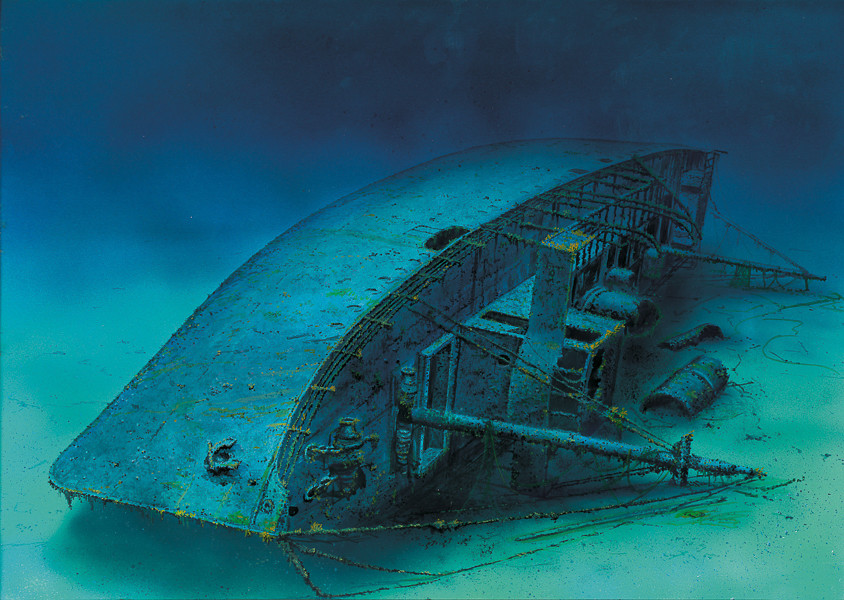
BRIONI
DEPTH: 45 - 61 m
SKILL: Expert
Brioni; passenger-cargo steamship; Italy, (ex-Austro-Hungarian)
Sunk: 2nd February 1930 (navigational error - collision with the shore)
Dimensions: l=68.36 m, w=9.5 m, 1,111 GRT
Coordinates: 43.01453° N, 16.22913° E
Location: S end of the island of Ravnik, close to the island of Vis
Access: 2/5 access is possible solely by boat (the location is alongside the uninhibited islet)
Visibility: 5/5 mostly very good visibility
Current: 4/5 weak, only occasionally moderate
Flora and fauna: 5/5 varied life on and around the wreck, on the wreck large specimens of fish
HISTORY:
The steamship Brioni was a mixed passenger-cargo ship, built in the shipyard Cantiere Navale Triestino (CNT) in Monfalcone. The ship was delivered in December 1909 to the client, the Lloyd Austriaco (Österreichischer Lloyd) company from Trieste. It sailed along the coastal route to Dalmatia and Albania transporting passengers and cargo. During the time of the First World War from August 1914 it sailed for the navy as a transport ship. On the night of 16th February 1917 it ran aground on the islet of Galun near Krk. It was refloated on 1st March 1917 and went back into military service in April 1917. When after the First World War the company Lloyd Austriaco became Italian, the ship was kept in its fleet for another full six years. Then in 1925 the Brioni was sold to the Societa di Navigazione a Vapore Puglia from Bari in whose service it continued to sail along the Adriatic coast.
During a voyage from Split, in poor visibility and due to a navigational error, on 2nd February 1930 it ran aground not far from the Cape of Jezera on the islet of Ravnik, and quickly sank. According to the available information it was transporting a cargo of tobacco and wine. It is not known to us whether there were any victims. This, as well as other details about the event, have yet to be researched.
WRECK CONDITION AND DIVING:
Although it sank due to the impact with the coast, the Brioni did not sink immediately along the steep cliffs of the Cape of Jezera, but about 50 metres away. The ship lies on its left side, with its stern turned towards the coast, on a sandy bottom which drops gently to a greater depth. The coast at the dive site is very steep, so that anchoring a boat is somewhat difficult and requires an experienced crew. As the location is in a protected area, diving is only carried out by authorised diving centres whose boats usually do not anchor, but remain close by for the entire time of the dive. The dive begins along the very cliffs that still carry the scars of the impact of the steamship Brioni. The sea is almost always very clear and transparent, so that the stern of the ship can already be seen at around a depth of fifteen metres. Less experienced divers can therefore observe a large part of the ship without exceeding a depth of twenty metres. From the first look it can be seen that the ship is completely intact and that seventy years of rest on the seabed has caused no harm. A hole in the panelling which had caused the sinking of the ship was probably on the port side, which is now situated under the sand.
The shallowest part of the stern is located at a depth of about 40 metres and is situated near the foot of the rocky part of the bottom, which then passes into fine sand. It is here that every underwater tour of the ship normally starts. At the stern the large paddle of the rudder and the huge four-bladed propeller dominate. Swimming along the right (shallow) side of the ship we notice a series of circular windows, the aft davits for the lifeboats and the well-preserved superstructure and masts. The upper section of the funnel has collapsed and lies next to the boat. The wooden decks have rotted away so through them we can see the interior of the cabin and the engine room. The metal panelling of the bridge is complete, and the windows still retain their shape. At the end of the bow and around the anchors and windlasses constantly swim shoals of swallowtail sea perch, beautiful little fish with soft pink tones and long bluish fins which belong to tropical seas. On the steel bulkheads rest large groupers, and in the interior of the ship larger specimens of conger eels can be encountered. The railings, masts and derricks for cargo are full of sponges of bright yellow colours. The dive finishes with decompression intervals close along the coast, which is also very apt since in these shallower depths the ground is rutted with cracks around which shoals of various tiny fish gather.
When the sea is calm after the dive it is also lovely to visit the cave which is located west of the Cape of Jezera, about 300 metres away from the Brioni. The cave is not deep, but its entrance is so spacious that it is possible to even sail into with a small boat. According to the stories of the local people during the Second World War British patrol boats occasionally sheltered here. Diving the surroundings of the cave can also complete our diving day.
Note: Despite the excellent visibility, due to the deep depths (the bottom of the ship’s bow is at a depth of 60 metres) the Brioni is not suitable for less experienced divers. A detailed tour of the ship is only for divers qualified in technical diving. Due to decompression diving lasts a relatively long time, and as the dive site is exposed to winds from the east and the south, weather conditions should be taken into account. According to my own experience, already upon a weak “jugo” SE wind, due to the swell, boarding the dive boat is very difficult as well as dangerous. Therefore to dive this location needs calm and stable weather.
The description and illustrations are a courtesy of Danijel Frka and Jasen Mesić. Buy the whole book here: https://shop.naklada-val.hr/product_info.php?products_id=561
Sunk: 2nd February 1930 (navigational error - collision with the shore)
Dimensions: l=68.36 m, w=9.5 m, 1,111 GRT
Coordinates: 43.01453° N, 16.22913° E
Location: S end of the island of Ravnik, close to the island of Vis
Access: 2/5 access is possible solely by boat (the location is alongside the uninhibited islet)
Visibility: 5/5 mostly very good visibility
Current: 4/5 weak, only occasionally moderate
Flora and fauna: 5/5 varied life on and around the wreck, on the wreck large specimens of fish
HISTORY:
The steamship Brioni was a mixed passenger-cargo ship, built in the shipyard Cantiere Navale Triestino (CNT) in Monfalcone. The ship was delivered in December 1909 to the client, the Lloyd Austriaco (Österreichischer Lloyd) company from Trieste. It sailed along the coastal route to Dalmatia and Albania transporting passengers and cargo. During the time of the First World War from August 1914 it sailed for the navy as a transport ship. On the night of 16th February 1917 it ran aground on the islet of Galun near Krk. It was refloated on 1st March 1917 and went back into military service in April 1917. When after the First World War the company Lloyd Austriaco became Italian, the ship was kept in its fleet for another full six years. Then in 1925 the Brioni was sold to the Societa di Navigazione a Vapore Puglia from Bari in whose service it continued to sail along the Adriatic coast.
During a voyage from Split, in poor visibility and due to a navigational error, on 2nd February 1930 it ran aground not far from the Cape of Jezera on the islet of Ravnik, and quickly sank. According to the available information it was transporting a cargo of tobacco and wine. It is not known to us whether there were any victims. This, as well as other details about the event, have yet to be researched.
WRECK CONDITION AND DIVING:
Although it sank due to the impact with the coast, the Brioni did not sink immediately along the steep cliffs of the Cape of Jezera, but about 50 metres away. The ship lies on its left side, with its stern turned towards the coast, on a sandy bottom which drops gently to a greater depth. The coast at the dive site is very steep, so that anchoring a boat is somewhat difficult and requires an experienced crew. As the location is in a protected area, diving is only carried out by authorised diving centres whose boats usually do not anchor, but remain close by for the entire time of the dive. The dive begins along the very cliffs that still carry the scars of the impact of the steamship Brioni. The sea is almost always very clear and transparent, so that the stern of the ship can already be seen at around a depth of fifteen metres. Less experienced divers can therefore observe a large part of the ship without exceeding a depth of twenty metres. From the first look it can be seen that the ship is completely intact and that seventy years of rest on the seabed has caused no harm. A hole in the panelling which had caused the sinking of the ship was probably on the port side, which is now situated under the sand.
The shallowest part of the stern is located at a depth of about 40 metres and is situated near the foot of the rocky part of the bottom, which then passes into fine sand. It is here that every underwater tour of the ship normally starts. At the stern the large paddle of the rudder and the huge four-bladed propeller dominate. Swimming along the right (shallow) side of the ship we notice a series of circular windows, the aft davits for the lifeboats and the well-preserved superstructure and masts. The upper section of the funnel has collapsed and lies next to the boat. The wooden decks have rotted away so through them we can see the interior of the cabin and the engine room. The metal panelling of the bridge is complete, and the windows still retain their shape. At the end of the bow and around the anchors and windlasses constantly swim shoals of swallowtail sea perch, beautiful little fish with soft pink tones and long bluish fins which belong to tropical seas. On the steel bulkheads rest large groupers, and in the interior of the ship larger specimens of conger eels can be encountered. The railings, masts and derricks for cargo are full of sponges of bright yellow colours. The dive finishes with decompression intervals close along the coast, which is also very apt since in these shallower depths the ground is rutted with cracks around which shoals of various tiny fish gather.
When the sea is calm after the dive it is also lovely to visit the cave which is located west of the Cape of Jezera, about 300 metres away from the Brioni. The cave is not deep, but its entrance is so spacious that it is possible to even sail into with a small boat. According to the stories of the local people during the Second World War British patrol boats occasionally sheltered here. Diving the surroundings of the cave can also complete our diving day.
Note: Despite the excellent visibility, due to the deep depths (the bottom of the ship’s bow is at a depth of 60 metres) the Brioni is not suitable for less experienced divers. A detailed tour of the ship is only for divers qualified in technical diving. Due to decompression diving lasts a relatively long time, and as the dive site is exposed to winds from the east and the south, weather conditions should be taken into account. According to my own experience, already upon a weak “jugo” SE wind, due to the swell, boarding the dive boat is very difficult as well as dangerous. Therefore to dive this location needs calm and stable weather.
The description and illustrations are a courtesy of Danijel Frka and Jasen Mesić. Buy the whole book here: https://shop.naklada-val.hr/product_info.php?products_id=561

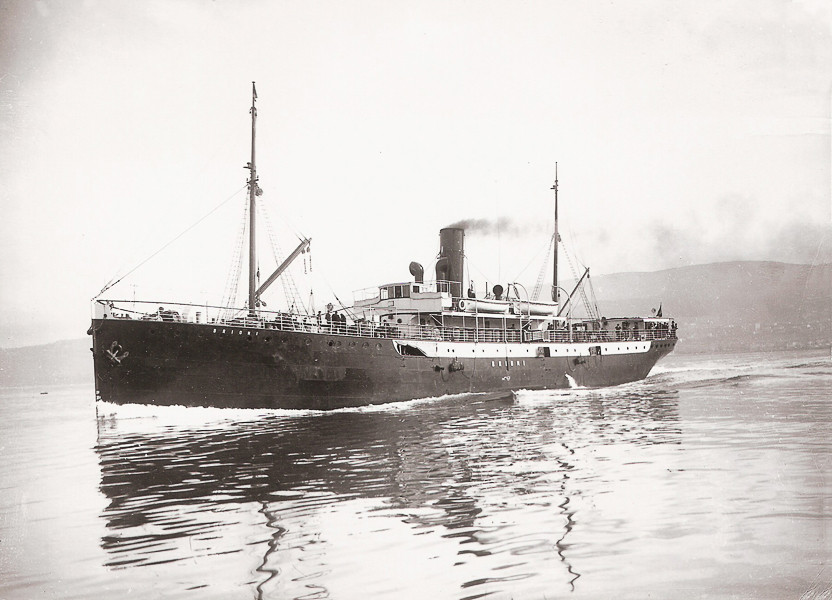
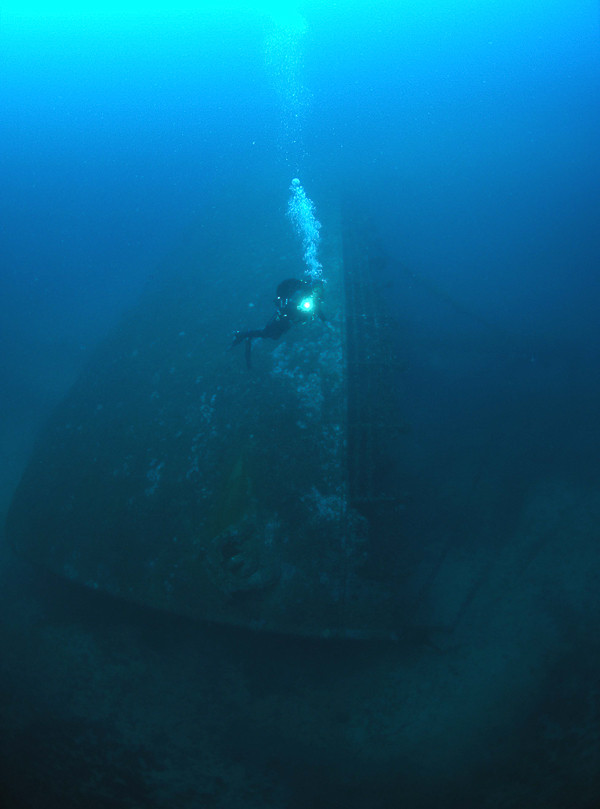
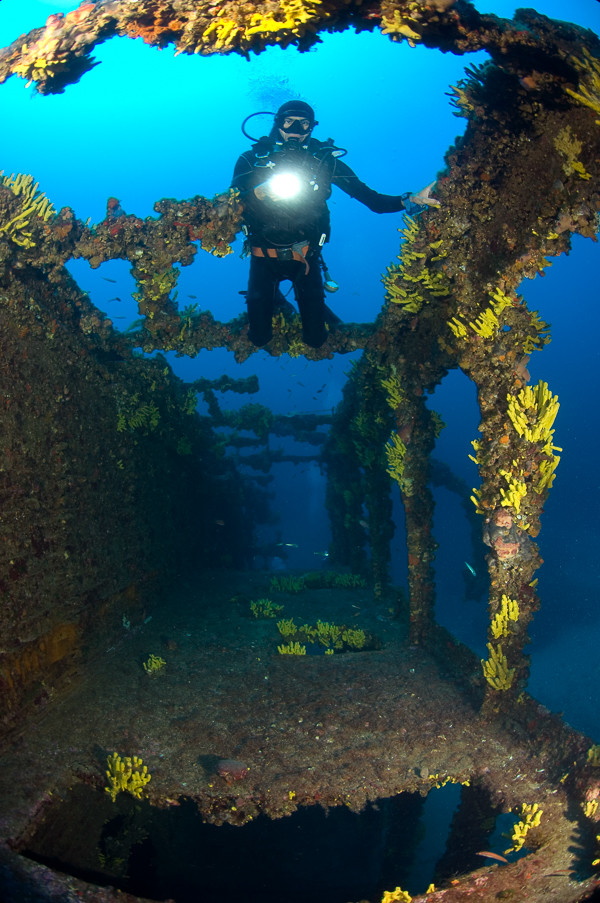


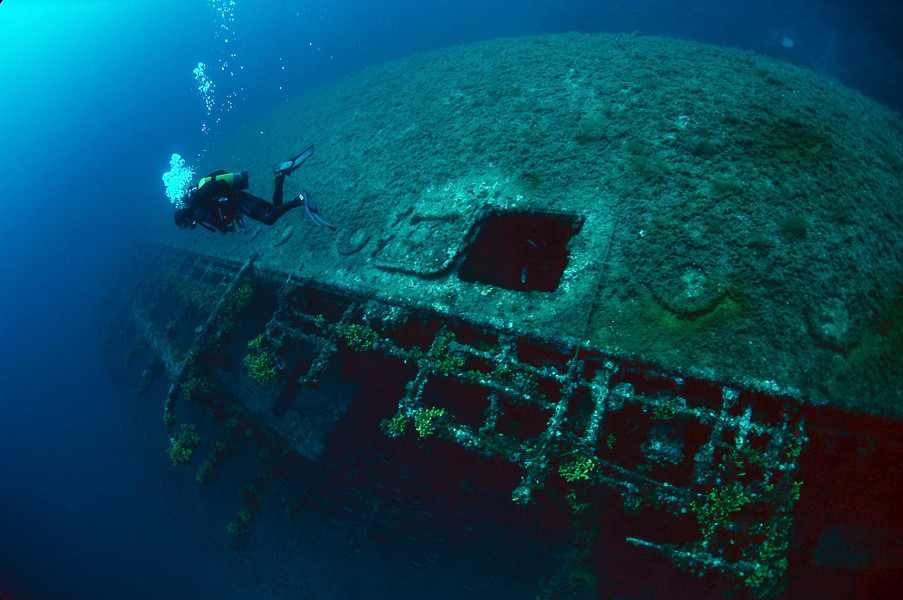

 The investment is co-financed by the Republic of Slovenia and the European Union from the European Regional Development Fund.
The investment is co-financed by the Republic of Slovenia and the European Union from the European Regional Development Fund.  H2O Globe BETA
H2O Globe BETA